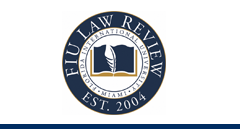Keywords
culture, experience, learning, exceptionalism, universalism, laws, norms, Covid-19, international law, international studies, global engagement
Abstract
The COVID-19 pandemic led to unprecedented closures of national borders and the withdrawal of much of the social and cultural activities of society into the walls of the home. For us, educators focused on global engagement and analyzing international law and society, the abrupt retreat into the shelter of domestic walls disrupted the very subjects we were studying—inside and outside the classroom. In the pandemic’s first wave, most study abroad and international experiential programs were cancelled indefinitely, and the programs that continued had to operate in an environment of social distancing and uncertainty. We were forced to scramble to accommodate the needs of our students who were suddenly sent home or had travel plans cancelled. At the same time, the global nature of this and other ongoing crises (from humanitarian emergencies that spill across borders to the global impacts of climate change) underscored the need to prepare students for a future where both cross-border crises and the need for international collaboration and education will be heightened. These developments also highlighted the need for a variety of meaningful virtual alternatives for students to acquire the critical skills and knowledge needed to succeed in global and cross-cultural environments. Against this backdrop, in late spring 2020 we turned our focus to developing a course to turn the COVID-19 crisis itself into a virtual international learning opportunity. We aimed to utilize the shared experience of living through a pandemic that was now a global crisis as a starting point for the exploration of global perspectives and responses to crisis, and as a vantage point to help students link their current challenges and experiences to the impact of pandemic in the societies where they had planned to travel for work or study. Isolated in our homes with our own public and domestic lives collapsing and colliding, we aimed to create global connections by creating a space where we and our students could connect the ruptures created by the current crisis to the ruptures and reshaping of perspectives, world views, and personal trajectories that is the hallmark of a transformative global or intercultural encounter. Our goal was to deepen students’ empathetic, contemplative, and communication skills—critical components of global experiential education—while drawing upon literature and pedagogy in these areas and employing experiential learning techniques. The rise of protests related to the Black Lives Matter movement in the middle of the course added a new dimension to our plan and served as a catalyst for both ourselves and our students to move beyond the original course goals and metrics, and to utilize our experiences living through a crisis as to explore how individuals and societies create and grapple with structural change. Similarly, the clashes and re-drawing of lines between our homes, workplaces and classrooms created additional opportunities for connection and to replace reimaging our individual and collective futures. This reflective essay interrogates and records our goals, methods and experiences in creating this classroom space and pedagogical experience during a period of crisis. Ultimately, it memorializes how the experience of developing and teaching this course during the COVID-19 pandemic itself also served as a crucible that reflected the pressures of the pandemic experience, and how our attempts to catalyze change and global engagement for our students were transformative for our own professional and personal trajectories.
Recommended Citation
Shruti Rana & Hamid R. Ekbia, Crisis, Rupture and Structural Change: Re-imagining Global Learning and Engagement While Staying in Place During the Covid-19 Pandemic, 16 FIU L. Rev. 133 (2021), https://doi.org/10.25148/lawrev.16.1.11.





